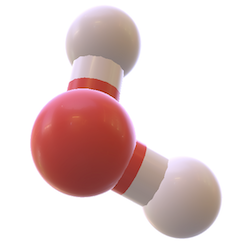Pathway: IRE1alpha activates chaperones
Reactions in pathway: IRE1alpha activates chaperones :
IRE1alpha activates chaperones
IRE1-alpha is a single-pass transmembrane protein that resides in the endoplasmic reticulum (ER) membrane. The C-terminus of IRE1-alpha is located in the cytosol; the N-terminus is located in the ER lumen. In unstressed cells IRE1-alpha exists in an inactive heterodimeric complex with BiP such that BiP in the ER lumen binds the N-terminal region of IRE1-alpha. Upon accumulation of unfolded proteins in the ER, BiP binds the unfolded protein and the IRE1-alpha:BiP complex dissociates. The dissociated IRE1-alpha then forms homodimers. Initially the luminal N-terminal regions pair. This is followed by trans-autophosphorylation of IRE1-alpha at Ser724 in the cytosolic C-terminal region. The phosphorylation causes a conformational change that allows the dimer to bind ADP, causing a further conformational change to yield back-to-back pairing of the cytosolic C-terminal regions of IRE1-alpha. The fully paired IRE1-alpha homodimer has endoribonuclease activity and cleaves the mRNA encoding Xbp-1. A 26 residue polyribonucleotide is released and the 5' and 3' fragments of the original Xbp-1 mRNA are rejoined. The spliced Xbp-1 message encodes Xbp-1 (S), a potent activator of transcription. Xbp-1 (S) together with the ubiquitous transcription factor NF-Y bind the ER Stress Responsive Element (ERSE) in a number of genes encoding chaperones. Recent data suggest that the IRE1-alpha homodimer can also cleave specific subsets of mRNAs, including the insulin (INS) mRNA in pancreatic beta cells.
Cells are subject to external molecular and physical stresses such as foreign molecules that perturb metabolic or signaling processes, and changes in temperature or pH. Cells are also subject to internal molecular stresses such as production of reactive metabolic byproducts. The ability of cells and tissues to modulate molecular processes in response to such stresses is essential to the maintenance of tissue homeostasis (Kultz 2005). Specific stress-related processes annotated here are cellular response to hypoxia, cellular response to heat stress, cellular senescence, HSP90 chaperone cycle for steroid hormone receptors (SHR) in the presence of ligand, response of EIF2AK1 (HRI) to heme deficiency, heme signaling, cellular response to chemical stress, cellular response to starvation, and unfolded protein response.
Individual cells detect and respond to diverse external molecular and physical signals. Appropriate responses to these signals are essential for normal development, maintenance of homeostasis in mature tissues, and effective defensive responses to potentially noxious agents (Kultz 2005). It is convenient, if somewhat arbitrary, to distinguish responses to signals involved in development and homeostasis from ones involved in stress responses, and that classification is followed here, with macroautophagy and responses to metal ions classified as responses to normal external stimuli, while responses to hypoxia, reactive oxygen species, and heat, and the process of cellular senescence are classified as stress responses. Signaling cascades are integral components of all of these response mechanisms but because of their number and diversity, they are grouped in a separate signal transduction superpathway in Reactome.
